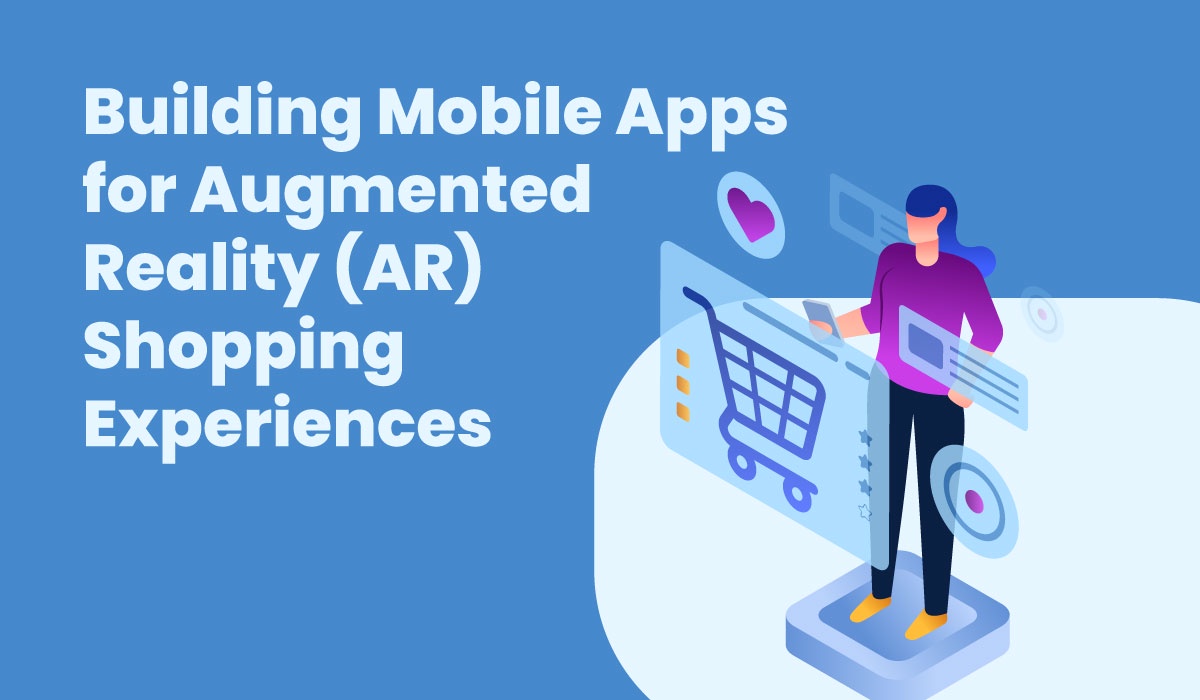In the fast-paced digital era, technology is constantly redefining the way we shop. Augmented Reality (AR) is one such innovative technology that has taken the retail industry by storm, offering immersive and interactive shopping experiences like never before. By blending the physical and digital worlds, AR enhances the way consumers perceive products, try them out virtually, and make informed purchase decisions.
In this blog, we will explore the fascinating realm of building mobile apps for Augmented Reality shopping experiences and the transformative impact it has on the retail landscape.
Immersive Product Visualization:
One of the key advantages of AR in shopping apps is its ability to provide immersive product visualization. Customers can view products in 3D, allowing them to examine every detail from different angles. Whether it's a piece of furniture, clothing, or electronic gadgets, AR technology enables users to virtually place products in their real-world environment using their smartphones or tablets. This immersive visualization not only enhances the shopping experience but also instills confidence in buyers by allowing them to assess the product's suitability in their own space.
Virtual Try-Ons:
AR-powered shopping apps revolutionize the way consumers try on clothing, accessories, or makeup products. By utilizing AR technology, users can virtually try on outfits, experiment with different styles, and visualize how products look on them in real-time. This feature not only saves time spent in fitting rooms but also enhances the online shopping experience, increasing customer satisfaction and reducing the likelihood of returns.
Interactive Product Engagement:
AR shopping apps enable interactive product engagement, allowing users to engage with products in novel ways. For example, customers can tap on specific parts of a furniture item to see additional information, watch videos, or view customer reviews. Interactive elements, such as animations and hotspots, provide users with a dynamic and engaging shopping experience, making the app more user-friendly and encouraging prolonged engagement, opined mobile app development service providers - Webomindapps.
Personalized Recommendations:
AR technology, combined with machine learning algorithms, can analyze user preferences and behaviors. By understanding customer preferences, AR shopping apps can provide personalized product recommendations, increasing the likelihood of customers finding products that align with their tastes. Personalization not only enhances the shopping experience but also strengthens customer loyalty and encourages repeat business.
Enhanced Customer Engagement:
AR-powered shopping apps foster deeper customer engagement by creating a unique and memorable shopping experience. Interactive AR features, such as gamified elements or virtual guides, entertain and engage users while they browse products. This heightened engagement not only keeps users entertained but also strengthens brand loyalty, encouraging users to return to the app for future shopping needs.
Seamless Integration with E-Commerce Platforms:
AR shopping apps seamlessly integrate with e-commerce platforms, allowing businesses to showcase their products in an innovative way. Integration with inventory systems, payment gateways, and customer databases ensures a seamless shopping experience for users. Customers can explore products in AR, add them to the cart, and complete the purchase within the same app, streamlining the entire shopping process.
Social Sharing and Community Building:
AR shopping apps can incorporate social sharing features, enabling users to share their virtual shopping experiences with friends and family on social media platforms. This social interaction not only promotes products but also creates a sense of community around the brand. User-generated content, such as AR try-on sessions or product showcases, can enhance brand visibility and credibility, fostering a loyal customer base.
Real-Time Data and Analytics:
AR shopping apps provide valuable insights into user behavior and preferences through real-time data and analytics. Businesses can analyze user interactions, popular products, and conversion rates to make data-driven decisions. This information helps businesses refine their marketing strategies, optimize product offerings, and enhance the overall user experience, ensuring continued growth and customer satisfaction.
Conclusion
Building mobile apps for Augmented Reality shopping experiences is revolutionizing the retail industry. By leveraging AR technology, businesses can create immersive, interactive, and personalized shopping experiences that captivate customers and drive sales. These apps not only enhance product visualization and engagement but also foster brand loyalty, encourage social sharing, and provide valuable data for future improvements. As technology continues to advance, the fusion of AR and e-commerce will shape the future of retail, offering consumers unparalleled shopping experiences and businesses innovative ways to connect with their audience. Embracing AR in mobile apps isn't just a trend; it's a transformative force that is reshaping the way we shop, making it more engaging, interactive, and enjoyable than ever before.


No comments yet